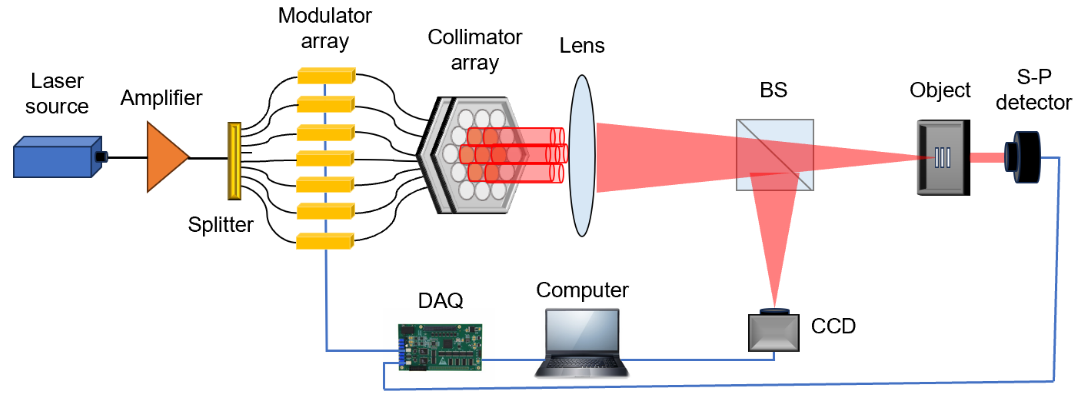Reviewed by Lexie CornerMay 13 2024
A research team led by Prof. Kai Han from the National University of Defense Technology in China has proposed a new method for single-pixel imaging (SPI) using a fiber laser array and an untrained deep neural network. This method offers faster imaging speeds than traditional SPI techniques and has the potential for remote sensing and target detection applications. The study was published in Frontiers of Optoelectronics.
 Efficient single-pixel imaging based on fiber laser arrays. Image Credit: Frontiers of Optoelectronics
Efficient single-pixel imaging based on fiber laser arrays. Image Credit: Frontiers of Optoelectronics
Its unique benefits compensate for the shortcomings of conventional array-based imaging technologies, which are more costly or still in their infancy, such as non-visible light imaging and distant sensing.
The spatial light modulator's refresh rate is a constant constraint on the scanning speed of SPI. For instance, in binary mode, the standard digital micro-mirror device (DMD) has a maximum refresh rate of 22 kHz. As a result of this constraint, real-time SPI is challenging to achieve.
Researchers at the National University of Defense Technology (NUDT), China, under the direction of Professor Kai Han, are interested in SPI and fiber laser arrays. They provide an effective SPI system that uses an untrained deep neural network and a phase-controlled fiber laser array.
To create illuminating light fields, the fiber lasers are grouped into a compact hexagonal configuration and integrated coherently. The randomly modulated fiber laser array, utilizing high-speed electro-optic modulators in each fiber laser module, makes rapid speckle projection onto the item of interest possible.
To improve the quality of the rebuilt images, the untrained deep neural network is also used in the image reconstruction process. Based on its capability to produce high emitting power (~ kW) and quick modulation (~ MHz), the researchers anticipate that the SPI technique will find application in target identification, remote sensing, and other related fields.
Journal Reference:
Lai, W., et al. (2024) Efficient single-pixel imaging based on a compact fiber laser array and untrained neural network. Frontiers of Optoelectronics. doi.org/10.1007/s12200-024-00112-8.